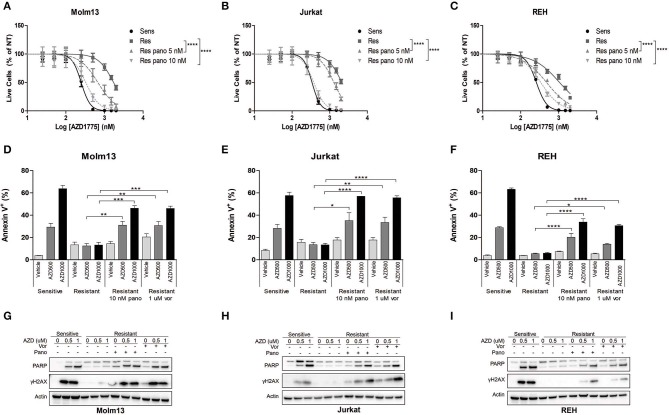Figure 2.
HDAC inhibition sensitizes resistant cells to AZD1775. (A–C) AZD1775-naive and -resistant Molm13 (A), Jurkat (B), and REH (C) cells were treated with the indicated concentrations of panobinostat and/or 25–2,000 nM AZD1775 for 72 h. Viable cell counts normalized to cells receiving no AZD1775 treatment (NT) are shown. Results are shown as mean ± SEM from a minimum of three independent experiments. ****P < 0.0001. (D–F) AZD1775-naive and -resistant Molm13 (D), Jurkat (E), and REH (F) cells were treated with panobinostat (10 nM), vorinostat (1 μM), and/or AZD1775 (500 or 1,000 nM) for 24 h and stained with Annexin V-PE. Results are displayed as mean ± SEM of three independent experiments. *P < 0.05, **P < 0.01, ***P < 0.001, ****P < 0.0001. (G–I) AZD1775-naive and -resistant Molm13 (G), Jurkat (H), and REH (I) cells were treated with panobinostat (10 nM), vorinostat (1 μM), and/or AZD1775 (500 or 1,000 nM) for 24 h after which protein lysates were subjected to western blotting with antibodies specific to PARP, γH2AX, and actin.

